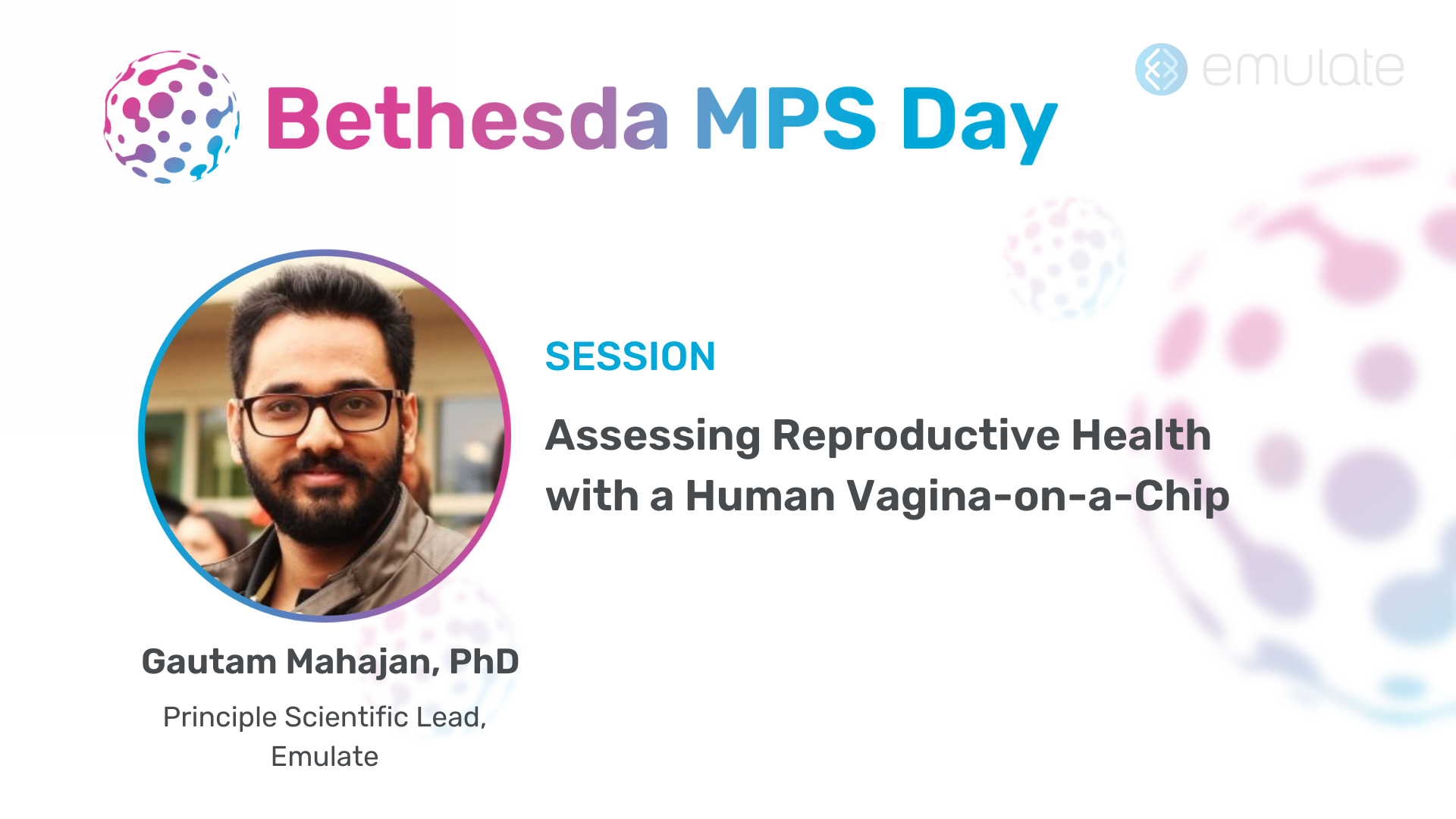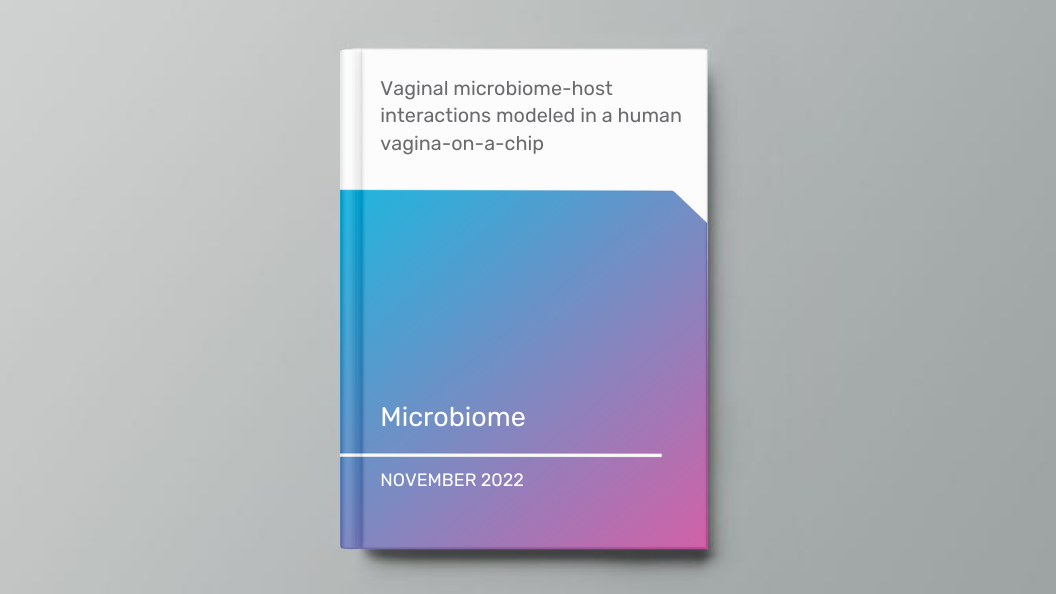Featured session at Bethesda MPS Day, which took place on November 9, 2023.
Dr. Gautam Mahajan’s presentation highlights the development of a human Vagina-on-a-Chip model, enabling the study of host-microbiome interactions in the female reproductive tract with unprecedented physiological relevance. Traditional methods, such as 2D cell culture and animal models, lack the complexity and conditions needed to accurately recapitulate the vaginal environment, including hormone sensitivity, low-oxygen gradients, and dynamic microbiome communities. To address these gaps, Dr. Mahajan’s team engineered a microfluidic chip that co-cultures stratified vaginal epithelial layers with stromal fibroblasts under controlled conditions.
This human Vagina-Chip model spontaneously forms a multi-layered epithelium that mimics in vivo structure and responds to physiologically relevant hormone levels (e.g., estrogen), demonstrating the model’s functional fidelity. A key feature is the chip’s ability to sustain and study diverse vaginal microbiota. Using optimal consortia of lactobacilli, the team established conditions that maintain the low vaginal pH and produce lactic acid, reflecting a state of “optimal” (not merely “healthy”) microbiome dominance. On the other hand, introducing dysbiotic consortia (e.g., Gardnerella species) altered pH, induced epithelial cell death, and triggered proinflammatory cytokine release—hallmarks of vaginal infections such as bacterial vaginosis.
Importantly, this platform can maintain bacterial-epithelial co-cultures for up to 72 hours, surpassing limitations of simpler in vitro models. The system also allows for precise manipulation of physiological parameters (flow rates, hormone concentrations) and in-depth analysis (imaging, cytokine assays, and relative abundance of microbial species), making it suitable for investigating microbial shifts, infection mechanisms, and potential therapeutic interventions without the translational challenges posed by animal models.
Key learnings from this presentation include:
- In vivo-like structure and function: The Vagina-Chip recreates a stratified epithelium responsive to hormonal cues, oxygen gradients, and bacterial colonization.
- Support for diverse microbiota: The model can sustain both beneficial lactobacillus-dominant and dysbiotic communities, capturing clinically relevant pH changes, cellular responses, and inflammatory mediators.
- Extended culture and complexity: Unlike traditional 2D cultures, the chip supports microbiome co-culture for multiple days, enabling more realistic infection and intervention studies.
- Broad applicability: This platform may help reduce reliance on animal models, guide therapeutic development for infections (like bacterial vaginosis), and inform screening for materials and interventions relevant to women’s reproductive health.
Dr. Mahajan’s groundbreaking work has been covered by numerous publications, including the New York Times and Scientific American.








